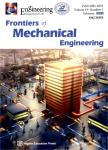Review of human–robot coordination control for rehabilitation based on motor function evaluation
作者机构:School of Mechanical Engineering and AutomationBeihang UniversityBeijing 100191China School of Rehabilitation MedicineWeifang Medical UniversityWeifang 261053China Beijing Advanced Innovation Centre for Biomedical EngineeringBeihang UniversityBeijing 100191China
出 版 物:《Frontiers of Mechanical Engineering》 (机械工程前沿(英文版))
年 卷 期:2022年第17卷第2期
页 面:37-50页
核心收录:
学科分类:1004[医学-公共卫生与预防医学(可授医学、理学学位)] 080202[工学-机械电子工程] 08[工学] 0804[工学-仪器科学与技术] 0802[工学-机械工程] 10[医学]
基 金:the National Natural Science Foundation of China(Grant Nos.91848104 91748201 and 52105004)
主 题:human–robot coupling lower limb rehabilitation exoskeleton robot motor assessment dynamical model perception
摘 要:As a wearable and intelligent system, a lower limb exoskeleton rehabilitation robot can provide auxiliary rehabilitation training for patients with lower limb walking impairment/loss and address the existing problem of insufficient medical resources. One of the main elements of such a human–robot coupling system is a control system to ensure human–robot coordination. This review aims to summarise the development of human–robot coordination control and the associated research achievements and provide insight into the research challenges in promoting innovative design in such control systems. The patients’ functional disorders and clinical rehabilitation needs regarding lower limbs are analysed in detail, forming the basis for the human–robot coordination of lower limb rehabilitation robots. Then, human–robot coordination is discussed in terms of three aspects: modelling, perception and control. Based on the reviewed research, the demand for robotic rehabilitation, modelling for human–robot coupling systems with new structures and assessment methods with different etiologies based on multi-mode sensors are discussed in detail, suggesting development directions of human–robot coordination and providing a reference for relevant research.



